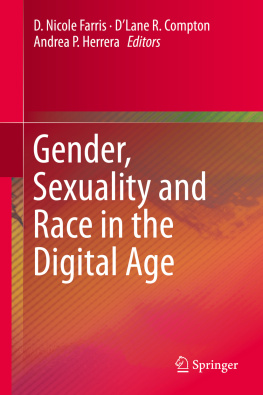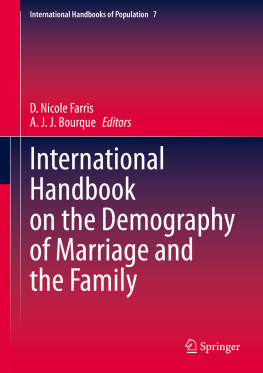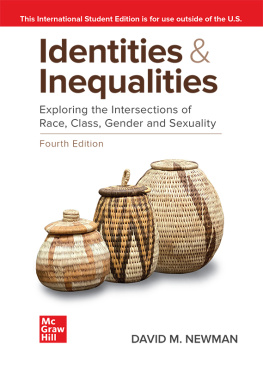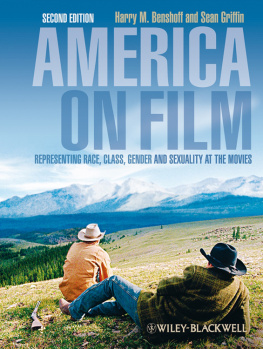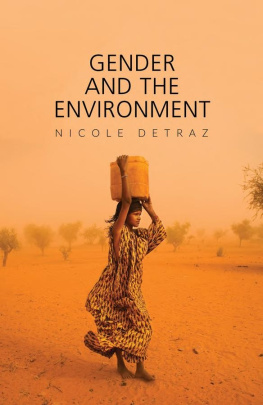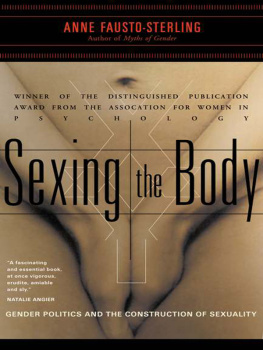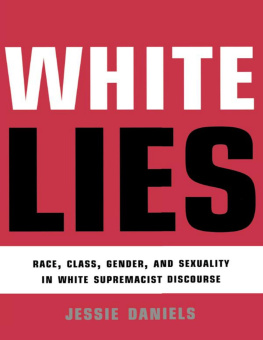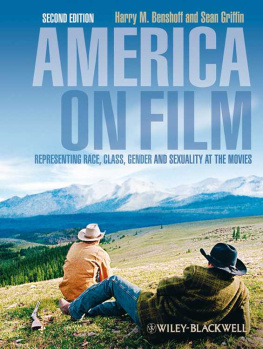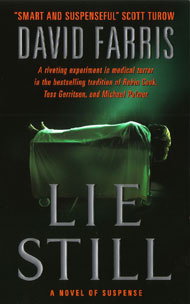D. Nicole Farris - Gender, Sexuality and Race in the Digital Age
Here you can read online D. Nicole Farris - Gender, Sexuality and Race in the Digital Age full text of the book (entire story) in english for free. Download pdf and epub, get meaning, cover and reviews about this ebook. year: 2020, publisher: Springer International Publishing, genre: Romance novel. Description of the work, (preface) as well as reviews are available. Best literature library LitArk.com created for fans of good reading and offers a wide selection of genres:
Romance novel
Science fiction
Adventure
Detective
Science
History
Home and family
Prose
Art
Politics
Computer
Non-fiction
Religion
Business
Children
Humor
Choose a favorite category and find really read worthwhile books. Enjoy immersion in the world of imagination, feel the emotions of the characters or learn something new for yourself, make an fascinating discovery.
- Book:Gender, Sexuality and Race in the Digital Age
- Author:
- Publisher:Springer International Publishing
- Genre:
- Year:2020
- Rating:3 / 5
- Favourites:Add to favourites
- Your mark:
- 60
- 1
- 2
- 3
- 4
- 5
Gender, Sexuality and Race in the Digital Age: summary, description and annotation
We offer to read an annotation, description, summary or preface (depends on what the author of the book "Gender, Sexuality and Race in the Digital Age" wrote himself). If you haven't found the necessary information about the book — write in the comments, we will try to find it.
Gender, Sexuality and Race in the Digital Age — read online for free the complete book (whole text) full work
Below is the text of the book, divided by pages. System saving the place of the last page read, allows you to conveniently read the book "Gender, Sexuality and Race in the Digital Age" online for free, without having to search again every time where you left off. Put a bookmark, and you can go to the page where you finished reading at any time.
Font size:
Interval:
Bookmark:
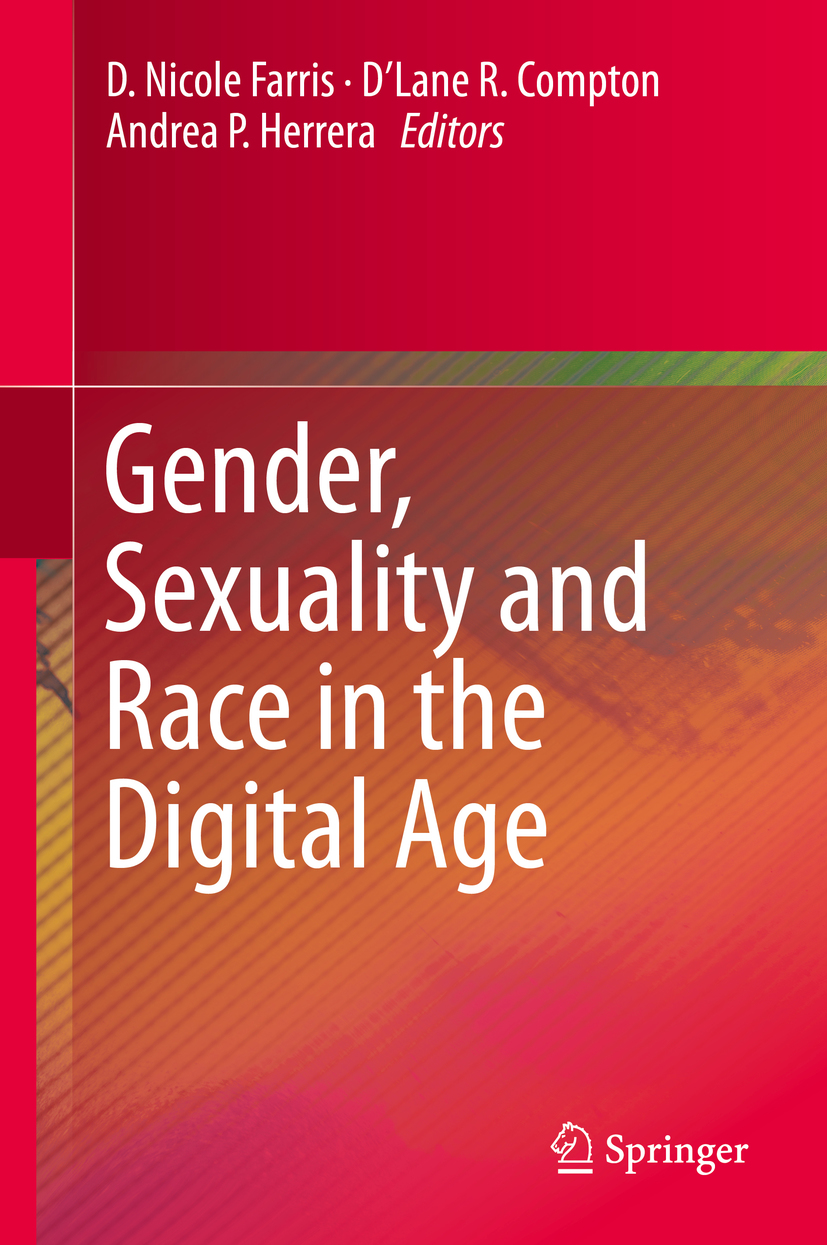

This Springer imprint is published by the registered company Springer Nature Switzerland AG.
The registered company address is: Gewerbestrasse 11, 6330 Cham, Switzerland
In late October 2011, local and then national press picked up the story of Colorado seven-year-old Bobby Montoyas unsuccessful attempt to join a local Girl Scout troop. Bobby, who is referred to by her mother as a boy but who news reports say self-identifies as a girl, was turned away by the troop leader (Goodin ). As soon as the local news reported on this event, Girl Scouts of Colorado and Girl Scouts of the United States of America quickly pointed out that the troop leader did not, in fact, act in accordance with Girl Scout policy on this issue, which is that any child who identifies as and presents as a girl is welcome to join a troop. Even as this happened, media outlets throughout the country and even abroad continued to report on the story, and as they did, people took to the comment threads of various news websites to express their thoughts about the story.
Though the piece started out as a local interest story in Colorado news and was picked up by parenting blogs and websites, it also received much attention from mainstream network and cable news. Interestingly, this story was framed as being one of national importance. A report on the Fox News website ().
Why would such a story a local report of a transgender or gender non-conforming child wishing to be a Girl Scout be of national interest? And furthermore, why would it elicit such strong, critical reactions from those who interacted with this story by commenting on online reports? I argue that, though certainly not representative of the reactions of all news viewers, the comments responding to this story can help us understand some of the reactions people have to the actual or imagined presence of a transgender or gender non-conforming child in public and private spaces.
It is important to note that, in nearly all of these pieces, what is emphasized is Montoyas status as male-bodied., and many also place some focus on the troop leaders reported comment about Montoya having boy parts. In most cases, the stories are accompanied by pictures or videos that show Montoya, with shoulder-length brown hair, bangs, and a little braid on one side, wearing a very stylish girls outfit, posed with or playing with various dolls: in other words, they show her presenting as female. In short, these articles frame the child as a boy dressed up as a girl. The juxtaposition of the visual of a little girl with words describing a boy seems intent on producing a certain amount of cognitive dissonance in the reader. It is sensational.
These articles are examples of a particular style of news reporting, which seeks to involve the audience through crafting specific emotional responses. Referring to the tone of more belief-driven cable news that has become the norm in the United States, Chris Peters writes that such tones are not accidental they are crafted with a certain experience in mind that is designed for a specific audience (:307). In the case of these news stories, then, it would not be a stretch to argue that the cognitive dissonance felt by the reader at seeing a girl but reading about a boy is precisely the emotional reaction intended by the news outlets reporting these stories.
Beyond inviting audience interaction through emotional involvement, however, many news outlets now also invite audience interaction through online participation in the news. Television newscasts regularly invite viewers to go to their website for more information about a story and to express their own opinions about the stories in the news. Though they are certainly not representative of the reactions of all viewers, the comments on news websites can nonetheless help us to understand some of the range of emotional reactions experienced by news viewers.
In order to understand the emotional response that a boy in Girl Scouts triggered, I examine the online comments responding to one article about this story: Bobby Montoya, 7-Year-Old Transgender Child, Turned Away From Girl Scouts, Later Accepted,). I focus on this particular event for several reasons. First, the Huffington Post has a reputation for being a more liberal news source, so its comments represent a wider range of viewpoints than those on other, more mainstream or conservative news sources. Second, at the time of the articles publication, the Huffington Post placed great emphasis on interaction with news stories; readers were encouraged to respond to pieces, and many articles on its front page at any given time had their number of comments highlighted as an important piece of information about the story. And finally, and perhaps most importantly, is the Huffington Posts commenting policy, which, unlike many other news websites, does not allow for anonymous posting. At the time the article was published, in order to comment on a story, a reader had to create an account with the website, and comments showed the commenters username, a link to their user profile, and various statistics about the quality of their commenting, as judged by other site users. Because of this policy, it is easy to determine whether a comment comes from an account that was created specifically to comment on that particular article evidence, it could be argued, of trolling by individuals or groups intent on creating inflammatory conversation on web forums or by someone who regularly interacts with the news on this site.
Font size:
Interval:
Bookmark:
Similar books «Gender, Sexuality and Race in the Digital Age»
Look at similar books to Gender, Sexuality and Race in the Digital Age. We have selected literature similar in name and meaning in the hope of providing readers with more options to find new, interesting, not yet read works.
Discussion, reviews of the book Gender, Sexuality and Race in the Digital Age and just readers' own opinions. Leave your comments, write what you think about the work, its meaning or the main characters. Specify what exactly you liked and what you didn't like, and why you think so.

